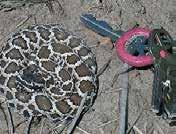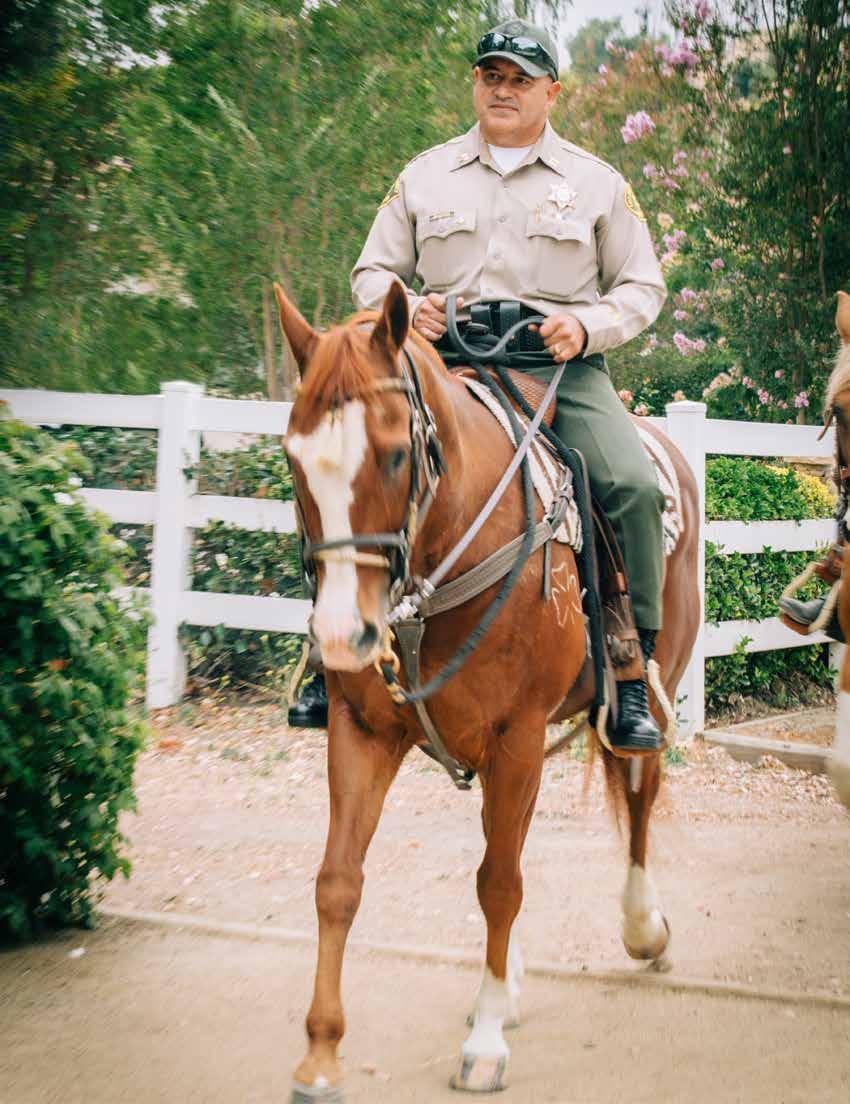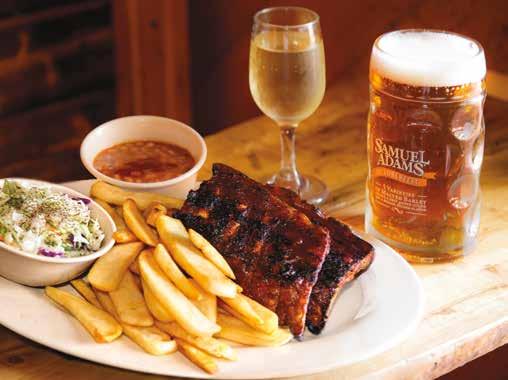


























Now accepting applications for the 2020-21 school year. Contact the Admissions Office for information about upcoming Admissions events. admissions@manzanitaschool.org.
Now accepting applications for the 2020-21 school year. Contact the Admissions Office for information about upcoming Admissions events. admissions@manzanitaschool.org.
Manzanita is an independent school located in Topanga Canyon. We are welcoming families to visit our living classroom and submit applications for the 2020-21 school year.

Serving families with students in grades 4 through 12 MANZANITASCHOOL.ORG

If you love writing or photography and love this community then have we got the perfect side-hustle for you!

Whether you’re ninety or nine, as long as you have a vision, a voice and the ability to write or visually communicate your ideas, we would love nothing more than to be able to commission you to create for this magazine.
Any stories you believe your neighbors would enjoy. . .important topics we all need to know about, bring them here. We will give you a platform AND you get paid!








Excellent for high school students looking to add some dimension and experience to their college applications. Also a great way to get involved in as well as help your community.



SOME ARE TINY, SOME ARE SHINY. ONLY ONE IS POTENTIALLY DEADLY. LIKE IT OR NOT, WE LIVE IN AN AREA WHERE SNAKES ARE DIVERSE AND PLENTIFUL.
HERE IS A GUIDE TO HELP YOU IDENTIFY AND RESPECT YOUR SCALY NEIGHBORS
Harmless and beneficial gophersnakes are sometimes mistaken for dangerous rattlesnakes. Gophersnakes are often killed unnecessarily because of this confusion. (It’s also not necessary to kill every rattlesnake.) Here’s how to tell them apart, but if you aren’t sure, keep your distance!
Rattlesnake – triangular head, larger than neck; thick, dull, non-glossy body; tail is blunt with one or more rattles. Gopher Snake – head slightly larger than neck; slender, glossy body; pointed tail.




A Gopher Snake makes a similar sound to a rattlesnake by hissing and rapidly moving its tail in dry grass.

LENGTH: Adults of the species can be 2.5 - 9 feet long. Hatchlings are fairly long, generally around 15 inches in length.
APPEARANCE: A large snake with heavily keeled scales, a narrow head that is slightly wider than the neck, and a protruding rostral scale on the tip of the snout that is bluntly rounded. Ground color is tan, light brown or yellowish, with large brown or blackish rounded blotches along the back and smaller markings on the sides. The dorsal blotches can fuse together producing a very dark color. The underside is cream to yellow with dark spots. The back of the neck is often a dull orange. There is usually a dark stripe across the head in front of the eyes and a dark stripe from behind each eye to the angle of the jaw. Juveniles tend to have
a darker and more compact pattern than adults.
ACTIVITY: Active in the daytime, and at night in hot weather, and especially at dusk and dawn. One of the most commonly seen snakes on roads and trails, especially in the spring when males are actively seeking a mate, and in the fall when hatchlings emerge. A good burrower, climber, and swimmer.
DEFENSE: When threatened, a gophersnake will do several things, sometimes one after the other, including: crawling away quickly to escape or hide; freezing upmaking the body rigid and kinked up so it won’t be noticed or perceived as a snake; and striking at the threat to scare it off. Gophersnakes also use a more dramatic defensive behavior - sometimes a snake will elevate its body and inflate it with air while flattening its head into a triangular shape, hissing loudly, and quickly shaking its tail back and forth to make a buzzing sound. This head-flattening and tail-rattling is usually considered to be a mimic of a rattlesnake, but the tail shaking could be a behavior similar to that of the rattlesnake that helps to warn off an animal that could be a threat to the snake by alerting it of the snake’s presence. Gophersnakes have a specially-developed epiglottis (the flap at the back of the throat) which increases the sound of their hiss when air is forced through.
DIET AND FEEDING: Eats mostly gophers, moles, rabbits, and mice, along with birds and their eggs and nestlings. Occasionally eats lizards and insects.
to humans. Handle this snake with caution, as some people have had unpleasant reactions to this snake’s bite, especially when the snake is allowed to chew, which helps to put more venom into the skin. Symptoms can include local swelling, redness, itching, and numbness, but the effects are not systemic.

LENGTH: Most lyresnakes encountered are 24 - 36 inches long.
APPEARANCE: A slender snake with a broad head welldifferentiated from the slim neck. The pupils are vertical, like those of a cat. Coloring closely matches a snake’s rocky habitat, from gray to light brown. There are usually about 35 dorsal blotches with light edges and a pale crossbar in the center, and smaller irregular blotches on the lower sides. A lyre-shaped marking is present on top of the head. The underside is off-white or yellowish with dark spots.
LENGTH: Adults are 26-70 inches in length. Average length is 3 - 4 feet.
APPEARANCE: A medium-sized muscular snake with smooth, glossy scales, a faded or bleached-out appearance, and a short tail. A tan or light brown ground color with dark brown blotches with dark edges on the back and sides and a pale, unmarked underside.
ACTIVITY: Nocturnal. Hides underground in daytime under rocks, in existing burrows, or uses its specialized nose to make its own burrow. Typically active from late February until November, depending on the weather. Most active in May. Less active during Summer.
DIET AND FEEDING: Preys mostly on sleeping diurnal (active during day) lizards, but also eats small snakes, terrestrial birds, and nocturnally-active mammals.
ACTIVITY: Nocturnal, active in very dry conditions as well as during rains. Terrestrial, and good climbers. This snake often searches rock crevices for prey. It can be found during the day inside crevices in large rock outcrops, as well as crossing desert roads at night.
DEFENSE: When threatened, a lyresnake will sometimes vibrate its tail similar to the behavior of a rattlesnake. Sometimes it will raise up the front of its body and strike.
DIET AND FEEDING: Primarily lizards, but also known to eat small mammals, nestling birds, and snakes.
Mildly Venomous - but not considered dangerous to humans.
Mildly Venomous - but not considered dangerous to humans.
LENGTH: Most seen are 8 - 12 inches long, rarely over 16 inches. Hatchlings are about 7 inches in length.
Capable of delivering a mild venom from small fangs in the rear of the mouth, but the venom is not considered dangerous
APPEARANCE: A small slender snake with a narrow flat head, smooth scales in 19 rows, and vertical pupils. Color varies, often matching the substrate, from light gray, light brown, beige, to tan or cream, with dark brown or gray blotches on the back and sides. Usually a pair of large dark blotches on the neck and a dark bar through or behind the eyes. Whitish or yellowish and unmarked underneath.
ACTIVITY: Nocturnal, and also active at dusk and dawn. Can be found under rocks, boards, logs, and other surface objects. Sometimes seen crossing roads on warm nights.
DIET AND FEEDING: Eats a wide range of terrestrial vertebrates, mostly lizards and their eggs, sometimes small snakes, frogs, and salamanders.
Not Dangerous (Non-poisonous)
Not Dangerous (Non-poisonous)
LENGTH: Adults are generally 30 - 48 inches long occasionally reaching 60 inches. Hatchlings are about 13 inches long.

APPEARANCE: A long fast-moving snake with a thin body and a long thin tail, large eyes, a broad elongated head, a slender neck, and smooth scales. Dark olive brown, gray, or black ground coloring with a pale yellow or cream colored solid stripe on each side which extends from the back of the eye to or beyond the vent. The stripes are relatively narrow. The underside is cream or pale yellow tapering to pink toward the tail.

ACTIVITY: Diurnal, often seen actively foraging in the daytime with head and forward part of the body held high up off the ground searching for prey with its acute vision. Climbs vegetation and seeks shelter in burrows, rocks, or woody debris. Very fast-moving and alert, quickly fleeing when threatened, this snake can be difficult to get close to.
DIET AND FEEDING: Eats lizards (particularly spiny lizards), small rodents, small birds, frogs, salamanders, small snakes. Juveniles will consume large insects.
LENGTH: California Kingsnakes seldom exceed 48 inches. Most commonly found at 2.5 - 3.5 feet in length. Hatchlings are about 12 inches long.
APPEARANCE: Smooth, shiny, unkeeled scales. The head is barely wider than the neck. Highly variable in appearance. Most commonly seen with alternating bands of black or brown and white or light yellow, including the underside, where the light bands become wider.
ACTIVITY: Active during daylight in cooler weather and at night, dawn, and dusk when temperatures are high.
DEFENSE: When disturbed, generally not aggressive, but sometimes vibrates the tail quickly, hisses, and rolls into a ball, hiding the head and showing the vent with it’s lining exposed.
DIET AND FEEDING: Eats a wide variety of prey, including rodents and other small mammals, lizards, lizard eggs, snakes (including rattlesnakes), snake eggs, turtle eggs and hatchlings, frogs, salamanders, birds, bird eggs and chicks, and large invertebrates. A powerful constrictor, coiling tightly around its prey.


Not Dangerous (Non-poisonous)
There are no venomous snakes in California that can be mistaken for this snake, but the similar-looking Arizona Coral Snake, found in Arizona, is venomous and dangerous.

LENGTH: 20 - 50 inches long.
APPEARANCE: A medium-sized slender snake with a head not much wider than the cylindrical body with smooth shiny scales. Black, red, and off-white or grayish-white rings circle the body. The red bands are noticeably wider than the others, with the white bands wider than the black. Some black bands may widen and cross over the red bands on the back, especially in populations in the Santa Monica Mountains. Typically, 60 percent or more of the triads have complete red bands with no black crossovers. The bands continue around the belly, but the coloring is paler, and the black and white bands are reduced in size giving the belly a reddish coloring. The nose is black sometimes with some red.
ACTIVITY: Secretive, but not rare in suitable habitat. Spends most of the time underground, under surface objects, or inside rock crevices. Occasionally seen active on the ground in the daytime, especially near shaded streams on hot sunny days. Active during the day at high altitudes during times of low nighttime temperatures (which is typical habitat.) When temperatures are more moderate, it can be crepuscular, nocturnal, and diurnal. During very hot weather, activity is primarily nocturnal. This snake is normally active at temperatures between approximately 55 - 85 degrees.
DIET AND FEEDING: Eats lizards, small mammals, nestling birds, bird eggs, amphibians, and occasionally snakes, including its own species.
Not Dangerous (Non-poisonous)
wider than the neck and keeled dorsal scales. The eyes are relatively large compared with other gartersnake species. Ground color is dark olive to black. The dorsal stripe is wide and well-defined, and yellowish to bluish in color. Light stripes along the lower sides are not very distinct, often blending in with the color of the belly. There are red bars alternating with the ground color along the sides above the lateral stripes. The head is red or orangeish. The underside is bluish gray, sometimes with dark markings.
ACTIVITY: Primarily active during daylight. A good swimmer.
DEFENSE: Often escapes into water when threatened. When first handled, typical of gartersnakes, this snake often releases cloacal contents and musk, and strikes.

DIET AND FEEDING: Eats a wide variety of prey, including frogs and newts and their larvae, fish, birds, and their eggs, small mammals, reptiles, earthworms, slugs, and leeches.

(Pictured on page 11)
Not Dangerous (Non-poisonous)
Gartersnakes have toxins in their saliva which can be deadly to their prey and their bite might produce an unpleasant reaction in humans, but they are not considered dangerous to humans.
LENGTH: Adults of this species measure 18 - 55 inches in length, but the average size is under 36 inches.
APPEARANCE: A medium-sized snake with a head barely
LENGTH: Most snakes seen are 26 - 36 inches in length.
APPEARANCE: A fast, moderately-sized slender striped snake with smooth scales, large eyes, and a large scale over the tip of the snout. Well-camouflaged, this snake is gray to brown with dark brown sides (without any light stripes) and a broad yellow or tan stripe down the middle of the back (which is narrower than the stripe found on other subspecies of patchnosed snakes). The underside is cream colored, sometimes shading to pale orange at the tail end. The sides may be dark on all but the lowermost 1 or 2 scale rows. The top of the head is brown. The width of the pale middorsal stripe is usually 1 full scale bordered by 2 half scales.
ACTIVITY: Diurnal - active during daylight, even in times of extreme heat. Terrestrial, but also climbs shrubs in pursuit of prey. Burrows into loose soil. Able to move very quickly. Acute vision allows this snake to escape quickly when threatened, making it sometimes difficult to observe or capture during the heat of the day. Enlarged back teeth might be used to envenomate prey. The enlarged rostral scale (on the tip of the nose) is thought to be useful in excavating buried lizard eggs. It may also be used to dig into underground burrows.
DEFENSE: When cornered, will inflate the body and strike.
DIET AND FEEDING: Eats mostly lizards, especially whiptails, along with small mammals, and possibly small snakes, nestling birds, reptile eggs, and amphibians.
Not Dangerous (Non-poisonous)
LENGTH: The typical total length of an adult ring-necked snake is about 11 - 16 inches.
APPEARANCE: A small, thin snake with smooth scales. Gray, blue-gray, blackish, or dark olive dorsal coloring, with a bright orange to reddish underside, speckled with black markings. The underside of the tail is a bright reddish orange. A narrow orange band around the neck, 1-2 scale rows wide.




ACTIVITY: Secretive - usually found under the cover of rocks, wood, bark, boards and other surface debris, but occasionally seen moving on the surface on cloudy days, at dusk, or at night.
DEFENSE: When disturbed, coils its tail like a corkscrew, exposing the underside which is usually bright red. It may also smear musk and cloacal contents.
DIET AND FEEDING: Eats slender salamanders and other small salamanders, tadpoles, small frogs, small snakes, lizards, worms, slugs, and insects.
LENGTH: Adults are 36 - 66 inches long. The only longer snake in California is the Gophersnake.


APPEARANCE: A slender fast-moving snake with smooth scales, a large head and eyes, a thin neck, and a long thin tail. (There is no well-defined stripe lengthwise on the body in this species.) The braided appearance of scales on the tail (like a whip) gives this species its common name. Color is variable; light brown, pink or reddish above. The dark coloring is interspersed with light coloring creating a banded or saddled appearance, with dark coloring surrounding the light scales. Dark (often black) blotches across the top of the neck, sometimes with white, sometimes with body color, in between. (Sometimes the neck and much of the head are solid black.) Color typically changes to a solid tan or reddish coloring along the length of the long thin tail.
ACTIVITY: Active in the daytime. Able to tolerate high temperatures. Moves very quickly. Emerges from winter site relatively late (April - May) due to the species preference for warm temperatures. Coachwhips are good climbers, able to climb bushes and trees. Often seen moving quickly even on hot sunny days, but often seen basking on roads in early morning or resting underneath boards or other surface objects. Frequently run over by vehicles and found dead on the road, partly due to the tendency of this snake to stop and eat small road-killed animals.
DEFENSE: Often strikes aggressively when threatened or handled.
DIET AND FEEDING: Eats small mammals including bats, nestling and adult birds, bird eggs, lizards, snakes, amphibians, and carrion. Hatchlings and juveniles will eat large invertebrates.
Rattlesnakes are important members of the natural community. They will not attack, but if disturbed or cornered, they will defend themselves. Reasonable watchfulness should be sufficient to avoid snakebite. Give them distance and respect. “Rattlesnakes are also among the most reasonable forms of dangerous wildlife: their first


LENGTH: Adults 30 - 44 inches long, sometimes up to 54 inches. Newborns about 10 inches long.
APPEARANCE: A heavy-bodied pit viper, with a thin neck, a large triangular head, and a rattle on the end of the tail consisting of loose interlocking hollow segments. A new rattle segment is added each time the skin is shed, which can be more than one time per year. Pupils are elliptical. Scales are keeled. Young are born with a bright yellow tail with no rattle - just a single button which does not make a sound. They grow rattles and lose the yellow color as they age. The pattern is brighter on juveniles than on adults.
ACTIVITY: Primarily nocturnal and crepuscular during periods of excessive daytime heat, but also active during daylight when the temperature is more moderate. Not active during cooler periods in Winter.
Above, the snake’s rattle is segmented and varies in length according to their age. Below, a baby next to house keys.
line of defense is to remain motionless; if you surprise them or cut off their retreat, they offer an audio warning; if you get too close, they head for cover. Venom is intended for prey so they’re reluctant to bite, and 25 to 50 percent of all bites are dry - no venom is injected.” Leslie Anthony. Snakebit: Confessions of a Herpetologist. Greystone Books, 2008.
DIET AND FEEDING: Eats birds, lizards, snakes, frogs, insects, and small mammals, including mice, rats, rabbits, hares, and ground squirrels. (Adult California Ground Squirrels are immune to rattlesnake venom and will intensely confront any snake they feel to be a threat.)
Prey is found while the snake is actively moving, or by ambush, where the snake waits near lizard or rodent trails, striking at and releasing passing prey. The snake then follows the trail of the envenomated animal and swallows it whole.
They use their natural camouflage to hunt by sitting still, without rattling, trying to remain invisible as they wait for a warm-blooded prey animal to pass close enough to strike. Rattlesnakes are often portrayed with the body partly coiled, the tail rattling loudly, and the head raised up and ready to strike, but they do not need to coil up this way to strike and bite. This display is a warning not to come any closer. It’s a defensive behavior that some rattlesnakes use when they sense that crawling away would put them in danger of attack.






THE HIDDEN HILLS COMMUNITY ASSOCIATION previously notified residents/members of two proposed rule changes being considered by the Board of Directors: a new rule protecting native trees and a new rule regulating private security cameras. Those changes were discussed at the June 16, 2020 Board meeting and several changes were made to the language. Accordingly, the proposed changes have been re-published for membership commentary and were sent out via U.S. Mail. Copies can be re-sent via email by request to shannon@hiddenhills.org.


According to the language of the rule change related to trees, “Trees native to California are of significant aesthetic, ecological and historical value for the Hidden Hills Community Association and the preservation of this unique plant life is in the common interest of the Association residents. The purpose of these rules is to provide heightened scrutiny to ensure the protection of native trees against indiscriminate removal, and to maintain the community’s distinctive character and allow for development in a manner consistent with the welfare of all residents, while also maintaining and improving property values and retaining our open rustic country feeling.”




Due to the increased prevalence (and conspicuousness) of private security camera within the community, rules governing where and in what manner these cameras can be installed is finally close to adoption. The goal is to prohibit the random installation of structures or poles specifically for the positioning of cameras, particularly near public areas or neighboring properties. These changes will fall under the community’s architectural standards and will generally not affect the normal installation of “ring” like cameras under eaves or near doorways.

On July 21st, the Board will be voting to finalize the changes to both of these items of concern. Prior, you have an opportunity as a member to review and comment. Please send comments to Shannon@hiddenhills.org.


s a businessman, Hidden Hills resident Russell Geyser has always approached projects with an eye towards differentiation, not only considering what will be the unique elements to what is being created, but also how those elements will come together to form something organic and real.
Beyond that, there is a personal aspect to the process, as what he is investing his time and vision into has to move him spiritually.
In 2018, Geyser had been in search of a home for his family in Hidden Hills that connected with this personal need,
aesthetically, he did not find it. For one, new construction in the nine-to-ten thousand square foot range was not exactly what one would call a diverse or wholly original array of individuality. Architectural approvals within the community, particularly for “spec builders,” had become an increasingly worn rubber stamp of white (or, occasionally, grey) exterior with black windows. Additionally, the land itself had to speak to him. While the properties in Hidden Hills are all unique by L.A. standards, Geyser wanted something unique within Hidden Hills.
So, after months of searching, Geyser was shown a property at the top of a private drive on Bonneville Road. The connection was made. Here was a piece
of land with a very unique vantage point. To the left, a sweeping vista of Ahmanson ranch, to the right, the juxtaposition of a clear and expansive city view all the way to the San Gabriel Mountains, and between them, just below, the bucolic, tree-lined heart of Hidden Hills. The house itself, for the most-part, had some good bones and a lodge-like style that reflected the neighborhood’s vibe, but it would require a ton of rethinking, revamping and some additional new construction to get it to where Geyser wanted to be.

Yet, the vision was there and Geyser couldn’t shake it. He knew what it could become and in the Spring of 2019 he dug into the project full-on. Architecturally, it would be a blend of contemporary island,

TRUE TO THE NATURAL FLOW OF THE ISLAND LIFESTYLE THAT INSPIRED THE DESIGN, THE OUTSIDE WAS ALLOWED TO BLEND SEAMLESSLY INTO THE AIRY INTERIOR SPACES

melded with the country feel of Hidden Hills.

Demolition began. The house was taken down to the studs, new foundation poured in many areas, and the old pool removed, replaced by a new one, cantilevered at the hillside, supported by caissons that went 18 feet into the ground. “Everybody moves to Hidden Hills to get some space,” says Geyser. “It’s hard to get space on the view lots because you only have so much square footage you can work with on the
pad. By moving the pool out to the edge, I picked up a significant lawn area and was able to create a sizeable backyard.” This, along with the view, became a coveted exterior feature to the two-acre property along with other outdoor details like an expansive motor court that can accommodate 16 cars and a raised garden for growing fresh herbs and vegetables.
True to the natural flow of the island lifestyle that inspired the design, the outside was allowed to blend seamlessly
into the airy interior spaces. Wide disappearing doors open the dining room and living areas to the back yard and the original floor-to-roofline windows maximize the impact and enjoyment of the panoramic views.
Nature was even a consideration in materials that are normally resigned to prefabricated, less-than-healthful composition. Although it is a painstaking, hand-troweled process, natural American clay was used for the walls in place of

drywall, making the walls both organic and breathable. Koa wood beams were used in the large office area and a high-end hepa air filtration system was incorporated into the entire home along with whole-home water filtration.

Another challenge with hilltop view lots in Hidden Hills is often the lack of frontage, which offers a certain “arrival value” to a property. To offset this, Geyser worked with the architects and landscape designers to create an impressive driveway leading to the house that brings visitors to a dramatic outdoor entry space, anchored on
the far end by tall, precision-crafted mahogany front gates.
Over the nearly two years the project took to complete, opportunity and timing ultimately redirected Geyser toward a personal project he’s dreamed of for most of his life; A waterfront estate in Malibu, where he spent many of his formative years. As he’s now started down the road to making this next home a reality, this one in Hidden Hills is now soon-to-be listed with Marc and Sara Shevin of Berkshire Hathaway Home Services, California Properties.
PLANTING AND MAHOGANY FRONT GATES SET THE TONE FOR THE “ISLAND LIVING MEETS HIDDEN HILLS” EXPERIENCE VISITORS CAN EXPECT ONCE THEY SWING OPEN.


ABOVE: IN THE FAR CORNER, THE DINING AND KITCHEN AREA, WHICH LEADS ALSO TO THE MASTER SUITE. IN THE FOREGROUND, A CUSTOM STEEL FLOATING STAIRCASE FLANKS THE EXPANSIVE FAMILY LIVING AREA.
LEFT: THE MASTER SUITE BATH FEATURES A GLASS-ENCLOSED STEAM SHOWER WITH AN EXTERIOR DOOR THAT LEADS TO A PRIVATE PATIO AND WATERFALL.

Check Complete Health Dentistry of Woodland Hills


a healthy body *offers are for new patients only
synergyacademics.com/save At Complete Health Dentistry of Woodland Hills, our doctors are dental health care leaders who believe in the importance of oral health as it relates to whole body health. Research has shown that by making good oral health a priority, you can lower the risk factors for heart disease, stroke, diabetes, pregnancy complications, Alzheimer’s as well as certain cancers. FREE teeth whitening with paid cleaning, exam and Xrays FREE invisalign consult includes full exam & Xrays text VENTURA to call to schedule: (818) 436-0565 COMPLETE HEALTH DENTISTRY
life for years to come.
visit: www.CHDWH .com
leads (818) 639-4259 for $79 gift certi cate for cleaning, exam & Xray. First 15 people only! Complete Health Dentistry www.CHDWH.com (818) 436-0565 · 22600 Ventura Blvd. Suite 204 Woodland Hills, CA 91364


MONDAY
MONDAY
11:00am - 8:00pm TUESDAY 11:00am - 8:00pm WEDNESDAY 11:00am - 8:00pm THURSDAY 11:00am - 8:00pm

FRIDAY 11:00am - 8:00pm
SATURDAY 3:00pm - 8:00pm SUNDAY 3:00pm - 8:00pm
11:00am - 8:00pm TUESDAY 11:00am - 8:00pm WEDNESDAY 11:00am - 8:00pm THURSDAY 11:00am - 8:00pm FRIDAY 11:00am - 8:00pm SATURDAY 11:00am - 8:00pm SUNDAY 11:00am - 8:00pm

Over the past few months, hunkereddown under Safer-at-Home orders, with many of our favorite eateries out of delivery range, I’ve found myself trying to replicate some of the dishes that I would look forward to each time we would go out for dinner. Among these, the lobster linguine that can sometimes be found as a “special” at Ivy by the Shore in Santa Monica. As pastas go, it’s on the lighter side, not highly sauced,
instead relying on the flavors of the lobster, parsley, garlic and tomatoes, infusing with the olive oil and a splash of white wine for a balanced and fresh culinary experience.

Give this one a try, it’s much easier than it looks. And although you may not necessarily think of pasta as a summer dish, this is definitely one to enjoy alfresco with a glass of dry white wine as you watch the sun set over Hidden Hills.

• Two Atlantic lobster tails. (It’s OK if these are frozen when you buy them, but let them thaw in the refrigerator prior to cooking)

• 6 Garlic cloves
• Olive oil
• Italian parsley
• 15-20 Cherry tomatoes. Either all red or multi-color.
• Grated Pecorino Romano
• Chili flakes (optional)

• Some white wine. (Pinot Grigio or Chardonnay, not too sweet)
• A pound of pasta. Linguine, spaghetti or fettuccine preferable. Black Squid Ink pasta is also amazing with this.
Set the pasta water to boil (lightly salt). Once the water is boiling, put the lobster tails in for 5 minutes.

Once everything is chopped and prepped, add the pasta to the water, as the cooking of the sauce should only take about 7 minutes max.

Pour olive oil into a sauté pan until the bottom is covered. Don’t be stingy with the olive oil as that is basically what will be the sauce. Better to put a little too much than not enough.
Fry the garlic in the olive oil until it starts to turn a little golden brown. Then add the lobster pieces and a little salt to-taste.

Pour in a splash of the white wine, about 1/4 cup.
If you want this as a spicy dish add chili flakes.
After about two minutes on low heat add the chopped parsley.
The cherry tomatoes should be added about two minutes before the end of cooking as you do not want those to get overcooked. They should be fresh and still have some crispness to them.
Total cook time for the sauce is about 5 to 6 minutes.
Once you strain the pasta let it sit in the strainer.
Using tongs, remove the lobster tails from the boiling water and immediately put them into a bowl of ice water to cool.


Keep the same water for the pasta. There may be some foam at the top from the lobster, but that’s fine.
Carefully split the lobsters lengthwise and then gently remove the meat. Cut each length of lobster meat at each segment. Don’t cut the pieces too small. Set aside.
Mince the garlic. Slice tomatoes in half. Loosely chop the parsley. About a handful.
Gently remove the lobster pieces and the cherry tomatoes with a slotted spoon and set aside in a bowl. This helps keep them from getting mangled when you’re mixing the pasta with the oil sauce. To do that add the pasta right into the pan and toss. If everybody is good with cheese this is a good time to add some while you’re tossing.
Now with the pasta coated with the sauce you can transfer it into The serving dish.
Then you can strategically place the lobster pieces and tomatoes on top for a refined presentation. Throw on a little more fresh parsley as a garnish and color.














just build for
we build long-term relationships.
Alegacy, when dutifully honored, is at the foundation of our traditions and our strengths as a community. This is something that Captain Salvador “Chuck” Becerra of the Los Angeles Sheriff’s Department has always known. As the newly appointed Captain of our local Lost Hills/Malibu Sheriff’s station, Becerra has an eye toward keeping traditions alive, and also toward creating new ones.
Speaking to him, you know he is going to continue to do the job well. His words come with a distinct enthusiasm for his chosen career of service that is encouraging and infectious. He is also very personable, insisting that you call him “Chuck.” It is a sense of pride and service instilled in him by his mother, L.A. County Sheriff’s Captain, Irma Becerra, Retired, who pinned her own insignia on her son in a short ceremony last month. “There has been a Becerra on this Department for 40 years,” says Chuck. “The Department is filled with ‘Legacies’ and this is the first mother/son team and I hope it’s not the last,” he adds, in reference to him occasionally nudging his two daughters towards what he believes to be a wonderful and fulfilling career.
His love for working within the LASD is a product of 30 years of dutiful service. Chuck started, as all L.A. County Sheriffs do, working in detention centers and then was assigned to the Lost Hills station for the first time as a deputy in 1998, where he was eventually promoted to training officer and then the rank of Sergeant. After that,


Chuck was assigned to the Compton station as Sergeant working in “Compton Gangs” for a stretch, eventually getting promoted to Lieutenant at which time he went back to working in the jails.
It is this diversity of background and experience that made him an excellent candidate to command a station. In February 2019, he was named Interim Captain at Lost Hills and then, last month, a series of transfers and reassignments within the ranks led to him being named permanent Captain.
As a resident of the area, and alongside his history within the station, Chuck has developed a good sense of how things could evolve to always improve the Department’s effectiveness and the overall level of service. He plans to bring in new and proven technologies to help fight crime. And he is always intent on reaching out to the community to hear their ideas and concerns, partly because he wants them to have the same sense of pride and appreciation for their local law enforcement officers.
Chuck also hopes to work closely with the residents of Hidden Hills, spending more time within the community as a goodwill gesture and also to heighten the Department’s awareness of people’s needs and the uniqueness of the area and its many trails. On Sunday, June 28th, he took what he hopes will be his first of many rides on horseback through the community, along with horse trainer Janet Wolf, Sheriff’s Deputy Mike Ranes, and his wife, Angie . . a new tradition and legacy he hopes to also honor and continue for many years to come.
“THERE HAS BEEN A BECERRA ON THIS











Skillful Landscape Management aptitude, including job foreman






Knowledgeable Design Capability

Complete new and existing irrigation systems understanding and installation



Safe and skillful tree pruning and trimming aptitude
Hard scape installation and strategy Landscape (heavy equipment operators)




The most important step in fighting flies is making sure your barn and paddocks stay clean of manure. Flies breed in manure so it’s a must to muck stalls and paddocks daily, and store manure in closed containers before pick-up by a disposal service.
Fly spray is essential to help repel flies from your horses. There are many options to choose from; just remember to apply frequently!
Fly masks are critical in protecting your horses’ eyes. They should be worn every day. It only takes a few flies to cause an eye infection or lay eggs inside your horses’ eyelids, which can lead to costly and time-consuming vet visits and treatments. If your horses are really sensitive, consider fly sheets and fly boots to further protect their skin.
Fly traps can help decrease the pest population around your barn. Just remember to only use traps that contain fly attractants at least 30 feet AWAY from where your animals congregate. You don’t want to attract more flies near your horses; the goal is to attract flies away from your animals. Sticky traps with no odor or attractant are fine to use in stalls or near barns.
Fly predators, or wasps, are beneficial insects that can be released in manure and consume fly larvae, thus decreasing the fly pest population. These are an eco-friendly option to help reduce fly numbers.

While increased airflow in barns can be beneficial in reducing flying insects, and also help reduce the temperature on hot days, please remember that indoor fans are one of the leading causes of barn fires. If fans are not specially made for the outdoors, dust and dirt can get into the motor, sometimes resulting in a tragic fire.
WithSummer comes the dreaded FLY season! Here are some tips to help your equine friends deal with these annoying pests.














The COVID-19 outbreak has critically affected Rescues and our ability to save animals and get them to safety. Can we lean on you to help with START's emergency funding needs for our spay/neuter programs and injured animal medical needs in California's underserved communities?
The COVID-19 outbreak has critically affected Rescues and our ability to save animals and get them to safety. Can we lean on you to help with START's emergency funding needs for our spay/neuter programs and injured animal medical needs in California's underserved communities?
The COVID-19 outbreak has critically affected Rescues and our ability to save animals and get them to safety. Can we lean on you to help with START's emergency funding needs for our spay/neuter programs and injured animal medical needs in California's underserved communities?


START Rescue . . . We are there for them. But we cannot be there without YOU!
START Rescue . . . We are there for them. But we cannot be there without YOU! , www.STARTrescue.org
, www.STARTrescue.org
Donations are a tax-deductible gift to START, a 501c3 organization: TAX ID # 45-4258426 • PO Box 4792, Valley Village, CA 91617
START Rescue . . . We are there for them. But we cannot be there without YOU! , www.STARTrescue.org
Donations are a tax-deductible gift to START, a 501c3 organization: TAX ID # 45-4258426 • PO Box 4792, Valley Village, CA 91617
Donations are a tax-deductible gift to START, a 501c3 organization: TAX ID # 45-4258426 • PO Box 4792, Valley Village, CA 91617




